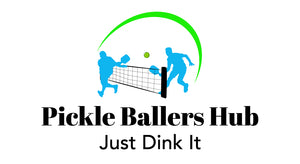The Rules of Pickleball
Pickleball is becoming more and more popular by the day. We see you’re here to join in on the fun. Take a quick lesson on all things pickleball. From learning how to serve to understanding the set-up of the court, we’ll go through it all. Soon enough you’ll be the pro teaching others about this stimulating sport.
Basic Info
Pickleball can be played either as singles (1 v 1) or doubles (2 v 2). Unlike tennis though, regardless of singles or doubles, the court boundaries and rules remain the same.

You’ll only need a few tools to start playing pickleball. The main items you’ll need are:
- A pickleball paddle
- A pickleball
- A proper court and net
Both the paddle and ball used in pickleball are unique compared to squash, tennis and all other racket sports. The court, similar to a tennis court, is divided down the middle by a net and either side is also divided into two halves. Reference the image below to get a good idea of the court dimensions and set up.
(It will be useful to reference this image as we move forward.)
How to Serve
Let’s start things off with the mechanics. Here are the basic pieces of a proper pickleball serve:
- You must swing in an upward motion; the opposite of tennis serves.
- You cannot make contact with the ball above your waistline when you serve.
- It is best to make contact somewhere between your knees and hip level.
- The face of your paddle should not be higher than your wrist at contact. Or in other words, don’t have your paddle tilted upward.
- At the point of contact, keep both of your feet behind the baseline of the court’s rear boundary line. Once the ball is struck, you may enter the court with one or both feet.
Now where should you be aiming your serves? You will always serve the ball diagonally over the net, to the opposite corner of the court. In order for a serve to be playable, it must land within the boundaries of that opposite corner of the court. After the serve though, you may hit the ball anywhere on the other team’s side.

Serving Pattern & Who Serves First
There is no specific way to decide who serves first in singles or doubles. Deciding with a volley, a classic coin flip, or even “Rock Paper Scissors” are all good options.
The first serve by each team, whether it’s to start a game or upon switching possession of the serve, is made from the rear right side of the court. As we learned before, you will serve diagonally to the opposite corner of the court. If a point is scored, the server and their teammate will switch sides, so the serve will now be made from the left side of the court. This process continues until a fault is made.
When the serving team commits their first fault, the teammate becomes the new server. The teammate will serve from whichever side of the court they were on when the fault was made. They will continue to serve until a second fault is made by their team. At this point, the serve will be given to the other team and the entire process repeats itself.
However, this “two fault” pattern does not apply in two scenarios:
- If the game is being played as singles.
- In this case, after every fault the teams will switch serving possession.
- When beginning a new game.
- In this case, when the first fault is committed by the serving team, the serve is given to the opposing team and then the “two fault” pattern begins.
The first server for each team will serve from the right side of their court when their score is even (0, 2, 4, 6, 8, 10), and from the left when it’s odd (1, 3, 5, 7, 9). In other words, if the serving team commits no faults, the server will go back and forth from right to left after each point. The same pattern goes for singles.
How to Score
- Similar to most sports, other than football and basketball, points are scored one at a time.
- Games are often played to 11 points but can also go to 15 or 21 if preferred.
- In order to win a game, a team must win by 2 points minimum.
- In essence, a game cannot be won 11-10. If this is the score, the game continues until either team is leading by at least 2 points.
- Points can only be scored by the serving team.
- The serving team gains a point when the receiving team commits a fault.
- If the serving team commits a fault, possession of the serve will either switch teammates or teams. We will learn what qualifies as a fault later on.
What’s the Non-Volley Zone?
The Non-Volley Zone is a 7-foot zone surrounding the net on both sides of the court. A common nickname for this zone is “The Kitchen,” as seen in the images above.
To understand this zone and its rules, it is key to know the difference between a volley and a ground stroke. A ground stroke is when one returns the ball after it has bounced once on your side. A volley is when one returns the ball before it bounces on your side. Now, here are the main rules to follow regarding the Non-Volley Zone:
- During a serve, if the ball lands in this area or makes contact with the line boundaries of it, it is considered “out” or a fault.
- Players cannot step within this zone or allow their feet to come in contact with its line boundaries before, during or after volleying the ball (hence its name). If they do, it is a fault.
- Players can legally step in this non-volley zone at any other time, including when hitting the ball off of a bounce, aka a ground stroke.
- Any shot besides a serve landing in this zone is playable.
These rules prevent players from being close to the net where they can smash or spike the ball on a volley.
What’s the Two Bounce Rule?
The Two Bounce Rule is somewhat self-explanatory. When the ball is served, the receiving team must let the ball bounce once before returning it. Then, the serving team must also allow the ball to bounce once before returning it as well. Hence, “two-bounce.”
After this, players can return the ball before it bounces, which is called a volley, or they can let it bounce once and then return it. The ball can never bounce more than once per side. If it does, it qualifies as a fault.
The main purpose of the Two-Bounce Rule is to prevent early advantages in games. This leads to extended rallies, keeping the game more exciting for both teams.
What Qualifies as a Fault?
From serving patterns to scoring points, knowing what qualifies as a fault in pickleball is absolutely necessary. A fault is anything that stops play because of a rule violation mentioned above. Possibilities are:
- The ball landing out of bounds (if the ball makes contact with any line boundaries, it is considered “in”)
- An invalid serve of any sort
- Stepping in the non-volley zone before, during or right after volleying the ball
- Not obeying the Two Bounce Rule
- Any time the ball doesn’t make it over the net when hit
The effect of a fault goes one of two ways:
- If committed by the serving team, teammates or teams switch serving possession
- If committed by the receiving team, a point is given to the serving team
Conclusion
This may feel like a lot to digest, but once you start playing, you’ll feel like a pro in no time. So don’t wait; get your paddle and balls, gather your friends, and find a pickleball court nearest to you!


